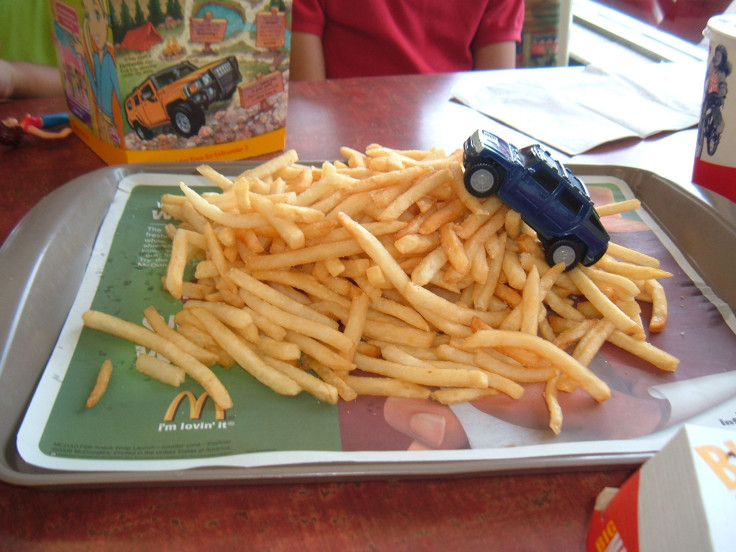TV Commercials Featuring Happy Meal Toys Bait Kids To Eat At Fast Food Restaurants And May Be A Threat To Their Health

McDonald’s Happy Meal toys are the highlight of many kids’ fast food experience. Restaurants know it. And according to a new study published in the Journal of Pediatrics, children who watch more TV that airs ads for kids’ fast food meals with toys are more likely to influence the entire family to eat more at fast food restaurants.
Researchers, from the Geisel School of Medicine at Dartmouth, tracked and analyzed all of the fast food ads that aired on TV in the U.S. in 2009, and found only two popular fast food chains advertised specifically on children’s channels. Next, they interviewed a parent from each of the 100 children, aged 3 to 7, enrolled in the study. The parents were asked how often their child watched each of four children’s TV networks; if their child asked to go to two of the fast food chains advertised on those networks; if the parents wound up bringing their family to the chains; and if their child collected toys from one or both of the fast food chain’s kids’ meals.
The study found that fast food commercials are working. Of those interviewed, 83 percent of the children asked their parents if they could visit at least one or both of the fast food chains, and 29 percent of the children actively collected happy meal toys. Not only that, but 37 percent of parents said they visited one of the two fast food restaurants advertised on children’s television networks more frequently than other restaurants.
Fast food restaurants with advertising time on children’s networks have a powerful influence. According to the American Academy of Child & Adolescent Psychiatry (AACAP), children learn information from the TV that may be wrong. “Often” unable to tell the difference between right and wrong, the kids are impressionable. Yet, they’re exposed to thousands of commercials every year, many of which include alcohol, junk food, fast foods, and toys. Not only that, but kids are exposed to this influence from a young age.
Two-thirds of infants and toddlers watch a screen for an average of two hours every day, and the American Academy of Pediatrics recommends kids under 2 years old not watch any television at all. Older kids, meanwhile, should watch no more than two hours of quality programming. But this is all a vast difference from reality. Kids between 8 and 18 years old spend four hours in front of a TV screen each day, and up to two additional hours on a computer outside of school. Kids who consistently spend more than four hours per day watching TV are more likely to be overweight, and researchers have now proven the fast food industry could have a hand in their weight gain.
Researchers believe their findings point to television commercials’ role in children’s food preferences. However, they don’t yet know how to compete with the fast food industry’s unhealthy kids meals, especially when the commercials dominate children’s TV sets. All we can do for now is avoid the ads altogether.
"Seventy-nine percent of the child-directed ads from those two restaurants aired on just four children's networks," said the study’s co-author Jennifer A. Emond, a research instructor from Geisel School of Medicine at Dartmouth, in a press release. "For now, our best advice to parents is to switch their child to commercial-free TV programming to help avoid pestering for foods seen in commercials."
Source: Commercial Television Exposure, Fast Food Toy Collecting, and Family Visits to Fast Food Restaurants among Families Living in Rural Communities. The Journal of Pediatrics. 2015.



























